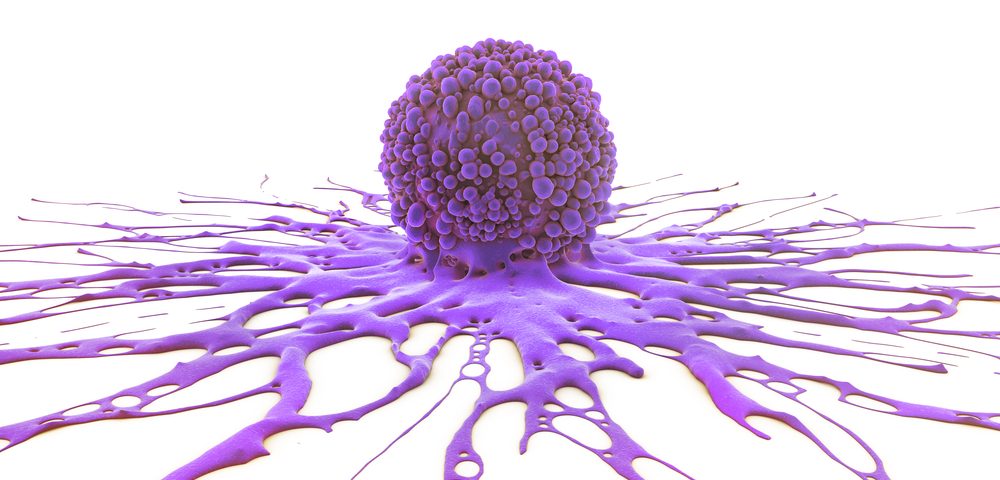Ovarian cancer cells harboring mutations in the ARID1A tumor suppressor gene tend to use the amino acid glutamine as a source of energy more often, making the cells more vulnerable to compounds that interfere with glutamine metabolism, scientists found.
As proof, they demonstrated that a compound that inactivates glutaminase (the enzyme that normally breaks down glutamine) can prevent tumor growth in mouse models of ovarian clear cell carcinomas (OCCC) whose cancer cells harbor ARID1A mutations.
“Our findings suggest that glutaminase inhibitors warrant further studies as a standalone or combinatorial therapeutic intervention for OCCC, for which effective options are very limited,” Shuai Wu, PhD, said in a press release. Wu is staff scientist at The Wistar Institute Cancer Center in Philadelphia, Pennsylvania, and the study’s first author.
The findings were reported in the study, “Targeting glutamine dependence through GLS1 inhibition suppresses ARID1A-inactivated clear cell ovarian carcinoma,” published in the journal Nature Cancer.
ARID1A is one of the most frequently mutated genes in all human cancers. Previous studies reported that up to 62% of OCCC tumors have ARID1A mutations that lead to the inactivation of the protein it provides instructions to make. These mutations are known genetic drivers of OCCC, a type of malignancy that usually does not respond to chemotherapy and has the worst prognosis of all ovarian cancer subtypes.
“There is evidence to suggest that metabolic reprogramming is implicated in OCCC. However, clinically applicable therapeutic approaches targeting metabolism in OCCC remain to be explored,” the researchers wrote.
Now, researchers led by Rugang Zhang, PhD, deputy director of The Wistar Institute, found that ARID1A mutations cause ovarian cancer cells to shift their metabolism, and favor the use of glutamine instead of glucose, as their primary source of energy.
“We found that [ARID1A] inactivation in cancer cells creates a specific metabolic requirement for glutamine and exposed this as a vulnerability that could be exploited for therapeutic purposes,” said Zhang, who also is professor and leader of the Immunology, Microenvironment & Metastasis Program at The Wistar Institute.
In their experiments, researchers genetically modified ovarian cancer cells to make them unable to produce ARID1A, thereby mimicking the effects more than 90% of ARID1A mutations have on OCCC tumors.
They found that cancer cells lacking this protein increased their glutamine consumption and became more dependent on its presence to grow. This last point was showcased by an experiment in which researchers found that cancer cells lacking ARID1A were less able to thrive when deprived of glutamine, compared to normal cancer cells.
Because ARID1A is part of a protein complex known to control the activity of several genes, the team investigated the consequences of ARID1A inactivation from a gene regulation point of view.
In the absence of a functional ARID1A protein, GLS1 — the gene that instructs production of glutaminase, a key player in glutamine metabolism — became overly active. That might help explain the shift from glucose to glutamine metabolism in cancer cells harboring ARID1A mutations.
Then, to explore the therapeutic potential of targeting this metabolic pathway in OCCC, researchers treated several mouse models of ovarian cancer with CB-839, a pharmacological inhibitor of glutaminase.
CB-839 successfully reduced tumor burden and prolonged the survival of animals with OCCC whose tumors contained ARID1A mutations, but it had no major effects in those whose tumors had no genetic mutations in ARID1A. Similar findings were obtained in mice carrying patient-derived tumors with and without ARID1A mutations.
In their final experiments, investigators tested the effects of combining CB-839 with an anti-PD-L1 immune checkpoint inhibitor — a type of anti-cancer therapy that increases immune cells’ effectiveness at recognizing and eliminating malignant cancer cells — in ARID1A-mutant ovarian cancer mouse models.
Mice treated with both agents experienced stronger suppressions in tumor growth, compared with animals treated with each compound alone, confirming these agents had a cumulative anti-cancer effect.
“Our findings support that a combination of GLS [glutaminase] inhibition with immune checkpoint blockade is synergistic in suppressing ARID1A-inactivated tumors,” the researchers wrote. “The combination is unique in that it leverages both tumor-suppressive effects of GLS inhibition in tumor cells and boosting antitumor immunity in the tumor microenvironment.”
Since immune checkpoint inhibitors are approved cancer therapies, and CB-839 was found to be safe in clinical trials both alone and in combination with other treatments, this combination therapy “is immediately translatable to potentially benefit patients,” the investigators concluded.

